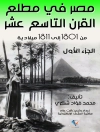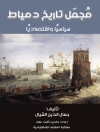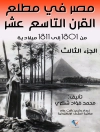This book challenges existing accounts of the nineteenth and twentieth centuries in which political developments are explained in terms of the rise of the nation-state. While monarchies are often portrayed as old-fashioned – as things of the past – we argue that modern monarchies have been at the centre of nation-construction in many parts of the world. Today, roughly a quarter of states define themselves as monarchies as well as nation-states – they are Royal Nations. This is a global phenomenon. This volume interrogates the relationship between royals and ‘their’ nations with transnational case studies from Asia, Africa, Europe as well as South America. The seventeen contributors discuss concepts and structures, visual and performative representations, and memory cultures of modern monarchies in relation to rising nationalist movements. This book thereby analyses the worldwide significance of the Royal Nation.
İçerik tablosu
Acknowledgements.- Foreword; Thomas Maissen, Barbara Mittler and Gita Dharampal-Frick.- List of Figures.- List of Contributors.- Chapter 1: The Royal Nation in Global Perspective; Charlotte Backerra, Milinda Banerjee, and Cathleen Sarti.- PART I: CONCEPTUALIZING THE ROYAL NATION.- Chapter 2: The Royal Nation and Global Intellectual History: Monarchic Routes to Conceptualizing National Unity; Milinda Banerjee.- Chapter 3: Resilient in Adversity: The Monarchical State in Prussia and Sardinia-Piedmont, 1847-51; Amerigo Carus0.- Chapter 4: Nepalese Monarchy in an Age of Codification: Kingship, Patriotism, and Legality in the Nepalese Code of 1854; Simon Cubelic and Rajan Khatiwoda.- Chapter 5: Loss of Control: Kaiser Wilhelm II, Mass Media and the National Identity of the Second German Reich; Martin Kohlrausch.- Chapter 6: The Comparative Endurance and Legacy of Morocco’s Royal Nation; David Mednicoff.- PART II: VISUALISING AND PERFORMING THE ROYAL NATION.- Chapter 7: From the White Tsar to the Russian Tsar: Monarchy and Russian Nationalism in Tsarist Turkestan, 1867-1917; Ulrich Hofmeister.- Chapter 8: The Monarch’s New Clothes: Transnational Flows and the Fashioning of the Modern Japanese and Siamese Monarchies; David Malitz.- Chapter 9: ‘Mein Hessenland blühe und in ihm die Kunst.’ Ernst Ludwig’s Darmstädter Künstlerkolonie: Building Nationhood through the Arts and Crafts; Anne Anderson.- Chapter 10: Performing Monarchy and Spanish Nationalism (1902-13); Javier Moreno-Luzón.- Chapter 11: The Dragon Flag in the Republican Nation: The Dowager Empress Longyu’s Death Ritual in 1913 and Contested Political Legitimacy in Early Republican China; Jia Feng.- PART III: REMEMBERING THE ROYAL NATION.- Chapter 12: Losing Monarchs: The Legacy of German and English National Historiography; Charlotte Backerra.- Chapter 13: Constructing Queenship in Early Nineteenth-Century French Historiography; Heta Aali.- Chapter 14: Celebrating and Reinventing Brazil: Monarchy and Nation in the Works of Afonso Arinos, 1897-1900; Alexandre Lazzari.- Chapter 15: Catalonia: Medieval Monarchs Testifying for Democracy, Nation, and Europe; Daniel Wimmer.- Chapter 16: “Para-Royalty” between Nationalism and Transnationalism: Russian Images of Personal Rule; Eva Hausteiner.- Chapter 17: Transnational Histories of the Royal Nation; Charlotte Backerra, Milinda Banerjee, and Cathleen Sarti.- Index.
Yazar hakkında
Milinda Banerjee is Assistant Professor at Presidency University, Kolkata, India.
Charlotte Backerra is Lecturer for Early Modern European History at the University of Stuttgart and at the University of Mainz, Germany.
Cathleen Sarti is Lecturer for Early Modern European History at the University of Mainz, Germany.












